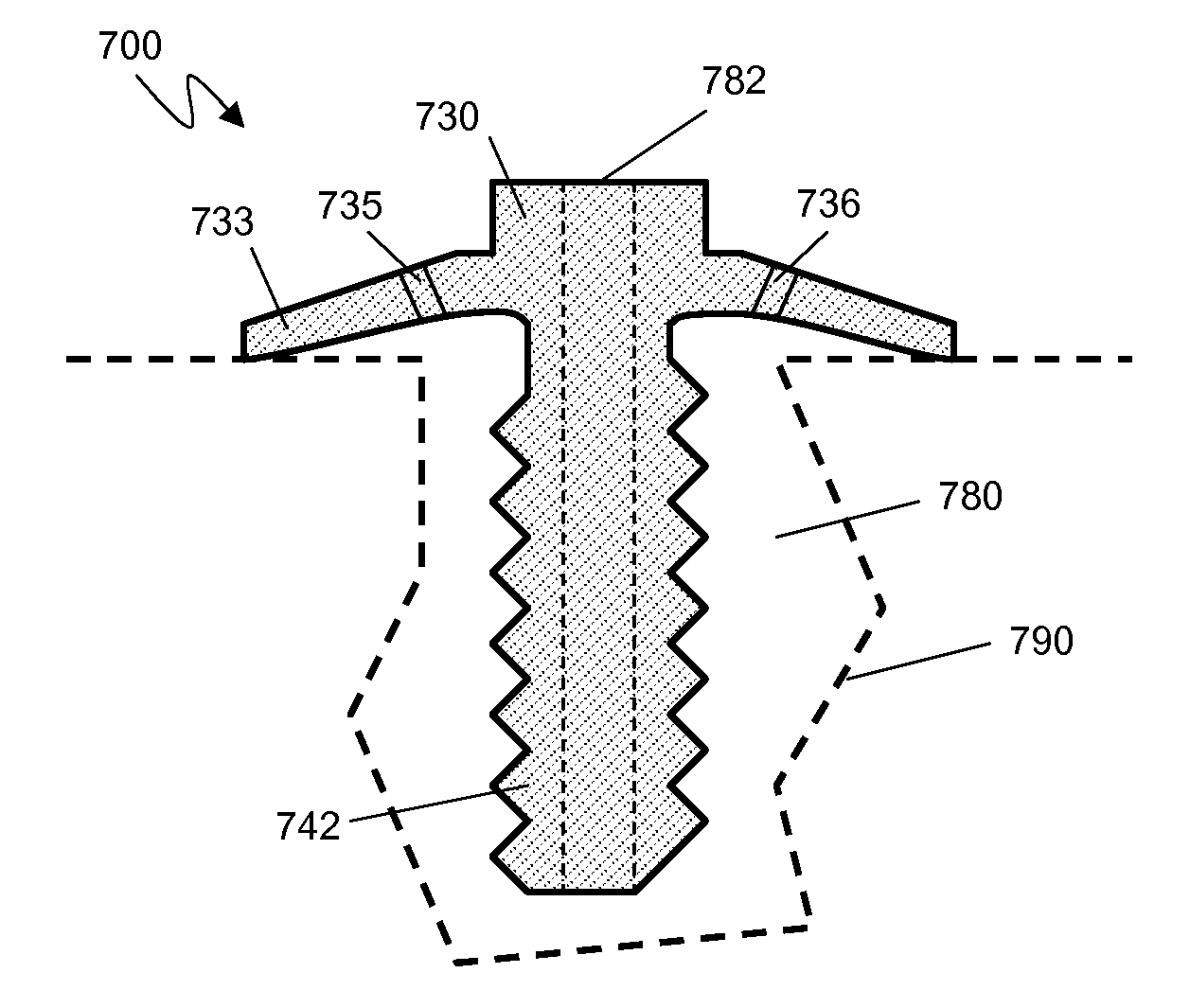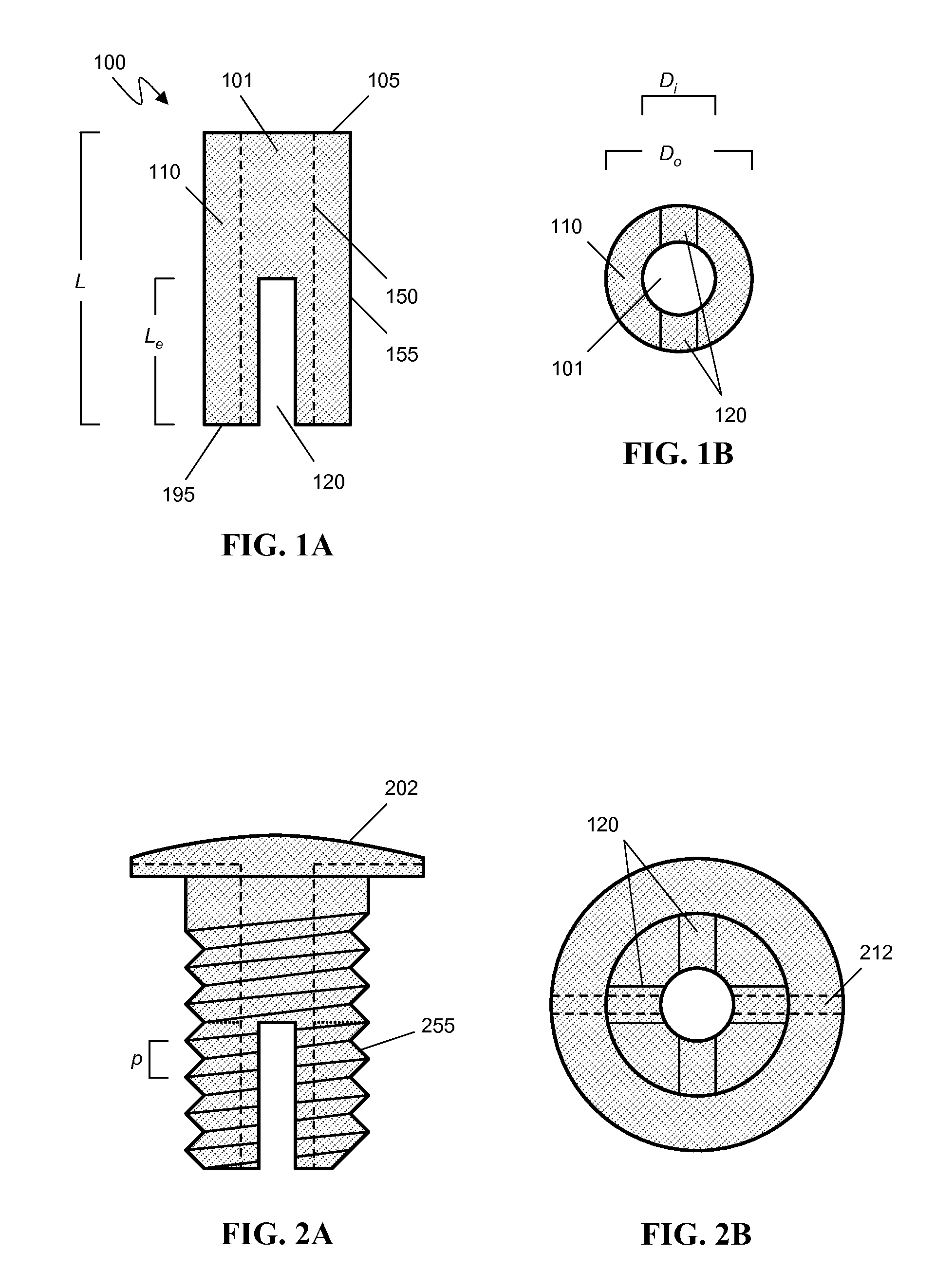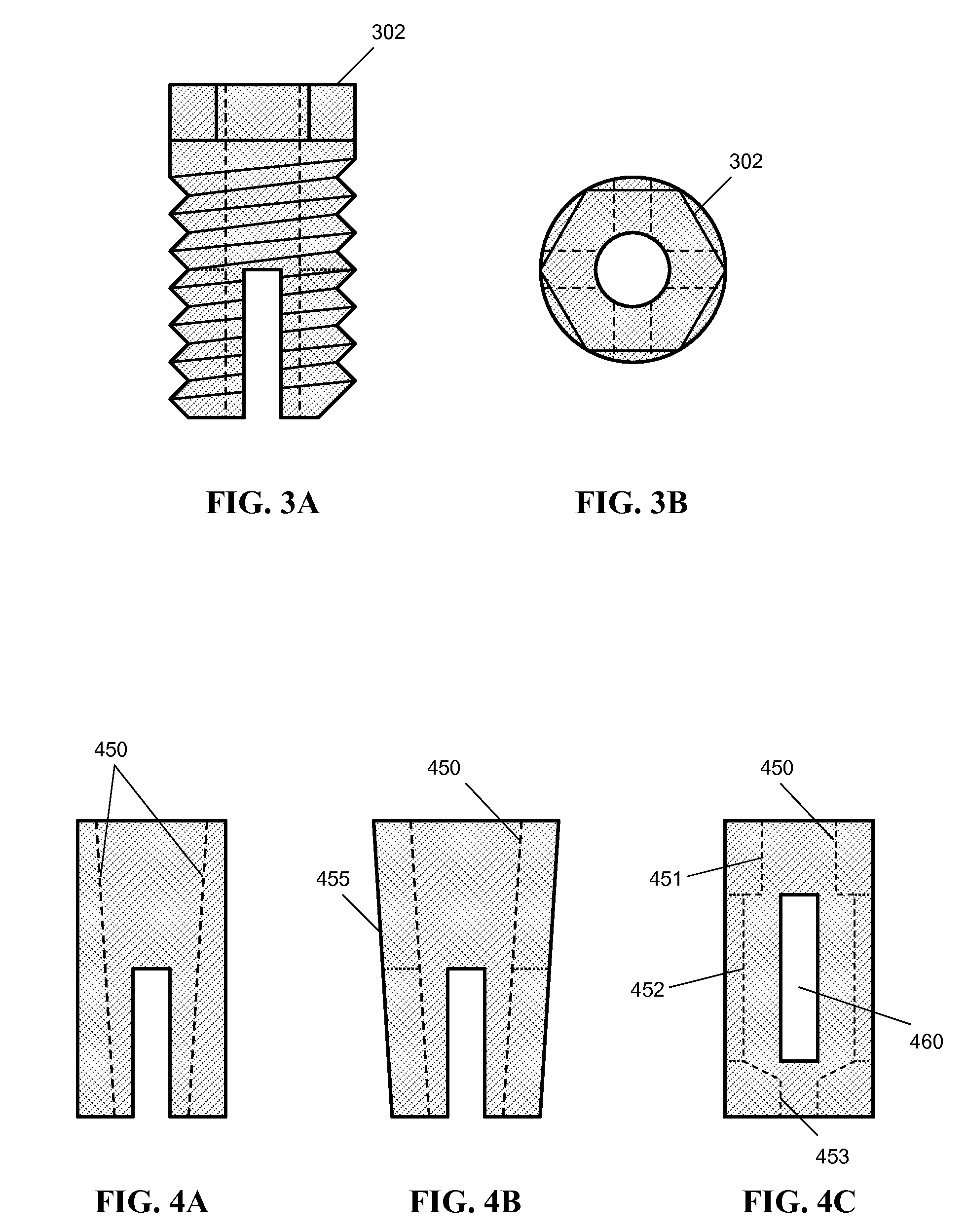Bone anchors for orthopedic applications
- Summary
- Abstract
- Description
- Claims
- Application Information
AI Technical Summary
Benefits of technology
Problems solved by technology
Method used
Image
Examples
Embodiment Construction
[0049]The present invention stems from the recognition that bone at a site of surgical intervention sometimes requires supplementation to provide adequate mechanical strength or integrity to meet the needs of the surgical intervention. As an example, a pedicle of the vertebra may require supplementation to securely receive and hold a pedicle screw. Bone at the site of surgical intervention, or placement site, can be normal bone, osteoporotic bone, cortical bone, cancellous bone, diseased bone, defective bone, deformed bone, bone which has undergone traumatic injury, bone needing revision from prior surgical intervention, or any combination thereof. Generally, the bone is unable to provide adequate mechanical support, anchoring or sufficient purchase for screws, fastening devices, or other medical devices which are to be attached to the bone. In such circumstances, a formable and solid-setting implantable bone anchor or preformed bone anchor would be a useful medical device to improv...
PUM
 Login to View More
Login to View More Abstract
Description
Claims
Application Information
 Login to View More
Login to View More - Generate Ideas
- Intellectual Property
- Life Sciences
- Materials
- Tech Scout
- Unparalleled Data Quality
- Higher Quality Content
- 60% Fewer Hallucinations
Browse by: Latest US Patents, China's latest patents, Technical Efficacy Thesaurus, Application Domain, Technology Topic, Popular Technical Reports.
© 2025 PatSnap. All rights reserved.Legal|Privacy policy|Modern Slavery Act Transparency Statement|Sitemap|About US| Contact US: help@patsnap.com



